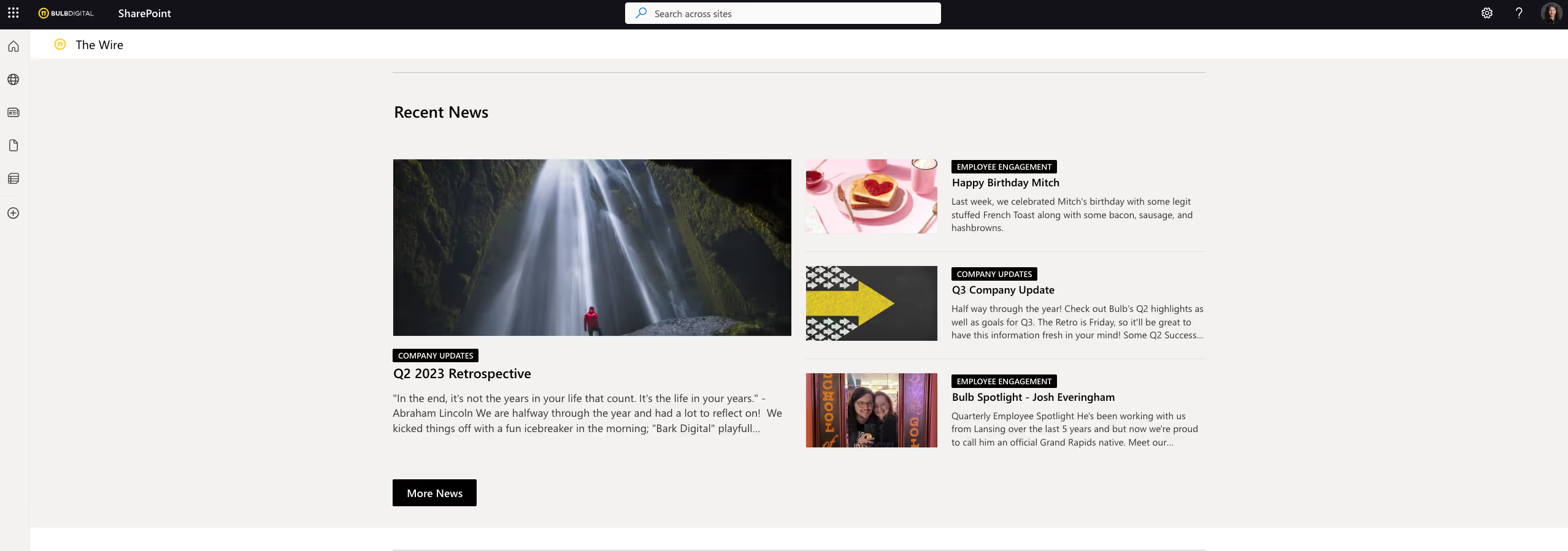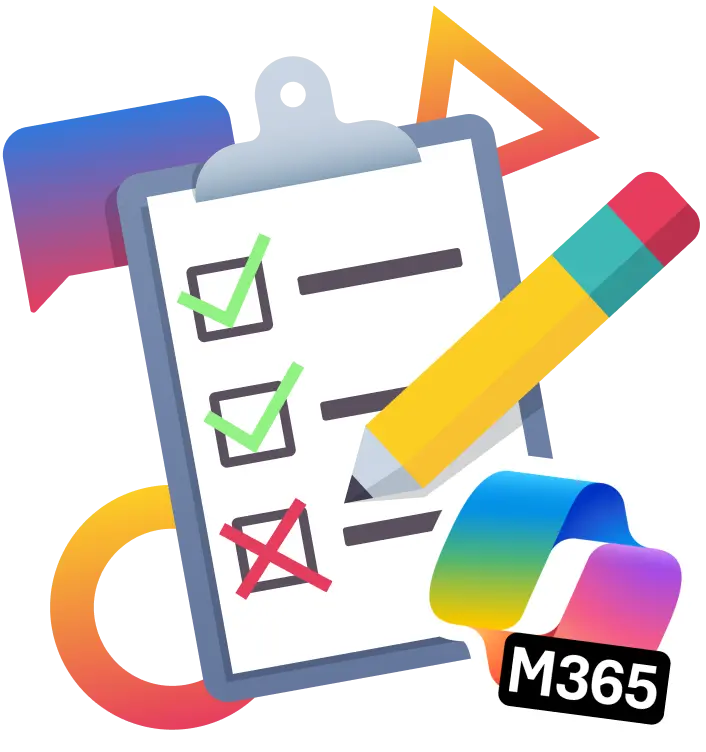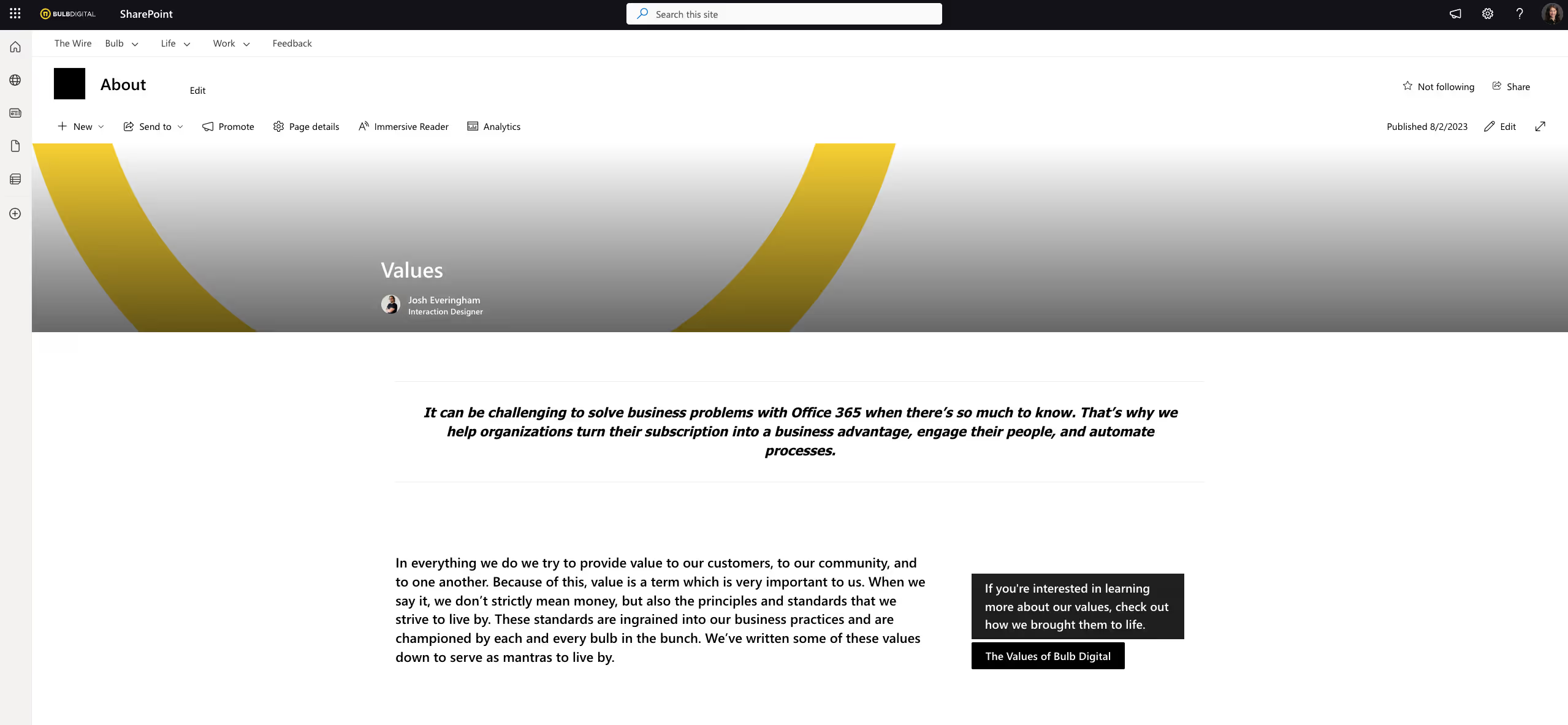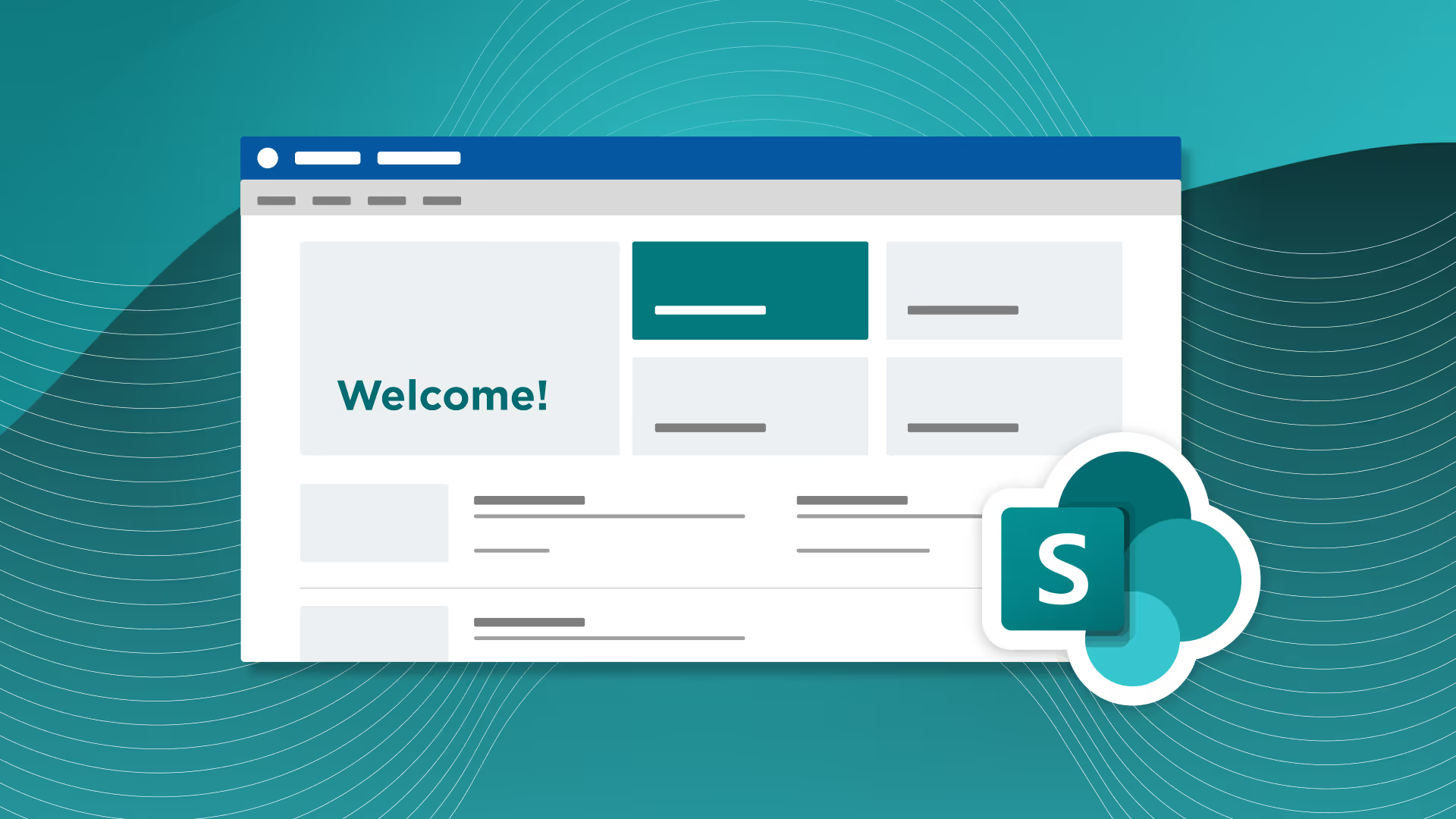What Does a Basic Intranet Look Like?
We're going to just come out and say it: you probably need an intranet! Intranets are essential when it comes to employee news, company updates, and more. Let's see what should be included in your intranet in today's blog.
Introduction
When we work with customers to create internal communication portals (A.K.A. an intranet), we have a few categories of information we always consider. Even the most basic intranet should include some content in these categories. Infact, in most cases, the difference between a basic intranet and an advanced intranet is the level of content included from these categories. Check out the details for each category to see what content you should include in your intranet.
Company News

To us company news is any message or notification that can/should be sent organization wide. Often these messages are being sent in email, chat, or newsletters today. Instead, ALL company news should be posted on your intranet. If you need to make sure specific users are notified that new company news has been posted, send a specific email or chat message to those specific users. This direct message should not include the content from the news post it should just direct users to the article that has been posted on the intranet.
Why is this important?
Leveraging your intranet for company news will enable the following changes in how communication occurs in your organization:
- Employees will learn about changes in a timely manner
- Leaders will feel empowered to communicate more
- New employees will be able to get up to speed faster
- Everyone will not feel as overwhelmed
Keys to good company news:
- Don't duplicate content: The last thing you need is another place you need to update when something changes. So if the news is about content that should live outside the article, don't duplicate it. Create a dedicated page/site to house that content and link to it from the article.
- Focus on context: Some of the most compelling parts of your news should be the context you bring to events that are happening. The why is way more meaningful than just the what.
- Create categories: Categories can make your company news easy to discover. When someone wants to find out what happened in last quarter's company update, they shouldn't have to scroll through 50 other articles they don't care about. Checkout our blog about how to manage your news.
Employment Resources
.avif)
The most basic information an employee needs to be effective is information about their relationship with the organization. Some examples of the questions this information should answer would be:
- When is pay day?
- How do I get reimbursed for expenses?
- How much vacation do I get?
- What benefits do we have?
Most organizations already have a handbook or dedicated HR system that answers many of these questions. While you can technically just upload your handbook or have one link to your HR system, we believe it is better to create dedicated content that would augment any other system.
Why is this important?
Every employee is going to need to understand information about their relationship with the organization. When the need happens, you want it to be easy for employees to find the information they need. You also want employees to understand the context behind what is offered. Formal handbooks or HR systems do not provide an opportunity to do this. One way to think about it is the difference between a downloadable parts catalog vs a brochure web site. Sure they serve the same purpose, but you are more likely to engage with a brochure website.
Keys to good employment information:
- Don't just give people links: If you already have an HR system or employee handbook, don't just create a link and say, "go read this PDF". While it takes work to maintain, having a simplified and more user-friendly version on your intranet will make a huge difference.
- Watch out for the curse of knowledge: If you have been working for an organization for any length of time you have a built-in set of knowledge. Don't let this stop you from putting things that seem sort of basic to you.
- Do you need different information for new employees: If your organization is looking to grow in the next 12 months, you should consider creating dedicated content for employee onboarding.

SELF ASSESSMENT
Is your business getting full value from your M365 subscription?
Billions of dollars are wasted each year on underused subscriptions. Take 3 minutes to find out where your tools are driving results, and where they’re holding you back.
Find Out Now

Is Team Communication Holding You Back?
Find Out in Just 2 Minutes.
Take our quick scorecard to uncover communication gaps and hidden barriers within your team.
Job Descriptions
.avif)
This is anything an employee needs to perform their job. As you can imagine, this is very broad and the level of detail you need will vary dramatically. We always encourage starting with basic information that is applicable to all employees and would usually be things like:
- Policies
- Procedures
- Job Aides
- Guides
Why is this important?
Because an intranet is a common and secure resource. It's the best place to store information about how employees across the organization should do their job. Doing this will create the following positive changes:
- Training employees on a new position will be faster
- Employees who do the same job will be operating from the same "playbook"
- Leaders will have a method to document and distribute changes in how work is done
Keys to good job information:
- Don't just do files: If you have any existing content that fits this category it is likely in a PDF or Word Document. In some cases the documents are good enough or are preferred, but in many cases you can create more engaging content for your users.
- Create a meaningful organization: This content area can be quite large. Use categorization, content structure, and aggregation to help users make sense of the mess.
- Include context: It can be natural to create a list of this information, try to marry this with important context for people who are about to consume the information. Assume they don't know why these matter.
Business Process

Organizations often spend significant effort to create external facing content to describe their position in the marketplace. This content is very similar but has a different voice and context. As an example, an organization's mission statement is often customer focused and can be difficult for individual employees to translate that mission to their work. This content is squarely targeted at answer this and questions like:
- Why do we do things the way we do?
- Where are we headed as an organization?
- What can I do to make a difference?
Why is this important?
Employees are making choices every day that can impact your business. The best way to make sure they are making choices in lines with the goals of the business is to communicate those goals. This means going beyond two or three one liners.
Keys to good business processes:
- Tie your external positioning to your internal goals: If you can't tie your external positioning to your internal goals, you should change one or the other.
- Remember you are talking to your staff and not customers: The way you talk to employees shouldn't be the same as you talk to customers. Employees need to understand the why and how they should apply things to what they are doing.
- Be as transparent as you can be: If something doesn't add up people will notice. Wherever possible step into those things and explain what is going on.
Conclusion
Now that you know what content you should be looking to include in your intranet, we hope you can start to envision just how it can fit into your organization. If you are looking for more information about how to do some of these things, check out a few of our other resources below:
How a Company That Builds Intranets Built Their Intranet - Blog
What is an Intranet? - Ep. 14 Make Others Successful Podcast







.jpg)

.jpg)





